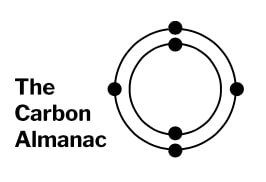
Indigenous communities continue to lead the way when it comes to creating renewable energy resources out of old fossil fuel installations. For example, in northeastern British Columbia, Dene and Cree territory is littered with orphaned oil wells. These represent “an environmental risk for local residents, who saw scant economic benefit from the extraction of the crude oil that flowed beneath them.”

But for the Fort Nelson First Nation these abandoned wells represent an opportunity – “developing a geothermal plant out of an orphaned oil well. It’s called Tu Deh-Kah, a Dene phrase that translates to “boiling water.” The First Nation hopes that the plant will go online in 2027, becoming one of Canada’s first electricity-generating geothermal facilities – and possibly the first one to be purely geothermal. Currently, the only large-scale plant is the dual natural gas and geothermal Swan Hills project in Alberta.”
“For Jim Hodgson, CEO of Deh Tai Corp., Fort Nelson First Nation’s economic development company, the project is steeped in pride. Tu Deh-Kah is 100% Indigenous-owned and poised to generate seven to 15 megawatts, nearly enough to power the First Nation and Fort Nelson, the adjacent municipality of the same name.”
In Canada, “First Nations, Inuit and Métis people are already at the forefront of the energy transition in Canada, as partners in or beneficiaries of roughly 20% of the country’s electricity-generating infrastructure – virtually all in renewables. But oil and gas remains the largest private employer of Indigenous people in Canada, with 10,800 Indigenous workers, according to the most recent data from Ottawa.”

The Dene and Cree communities of northeastern British Columbia are not alone in their efforts to implement renewable energy facilities on their land. In 2024, there was the first-ever Indigenous Geothermal Symposium (held in Hawaii) and at the event “Indigenous leaders in the geothermal space came together and developed the Geothermal Indigenous People’s Declaration. The declaration calls on the wider geothermal community to uphold UNDRIP, to consult early in the process and to ensure that Indigenous nations benefit from the project, while not compromising their duties as land stewards.”
From New Zealand to Canada and beyond Indigenous communities are at the forefront of the green energy revolution.Indigenous communities continue to lead the way when it comes to creating renewable energy resources out of old fossil fuel installations. For example, in northeastern British Columbia, Dene and Cree territory is littered with orphaned oil wells. These represent “an environmental risk for local residents, who saw scant economic benefit from the extraction of the crude oil that flowed beneath them.”
But for the Fort Nelson First Nation these abandoned wells represent an opportunity – “developing a geothermal plant out of an orphaned oil well. It’s called Tu Deh-Kah, a Dene phrase that translates to “boiling water.” The First Nation hopes that the plant will go online in 2027, becoming one of Canada’s first electricity-generating geothermal facilities – and possibly the first one to be purely geothermal. Currently, the only large-scale plant is the dual natural gas and geothermal Swan Hills project in Alberta.”
“For Jim Hodgson, CEO of Deh Tai Corp., Fort Nelson First Nation’s economic development company, the project is steeped in pride. Tu Deh-Kah is 100% Indigenous-owned and poised to generate seven to 15 megawatts, nearly enough to power the First Nation and Fort Nelson, the adjacent municipality of the same name.”
In Canada, “First Nations, Inuit and Métis people are already at the forefront of the energy transition in Canada, as partners in or beneficiaries of roughly 20% of the country’s electricity-generating infrastructure – virtually all in renewables. But oil and gas remains the largest private employer of Indigenous people in Canada, with 10,800 Indigenous workers, according to the most recent data from Ottawa.”
Although the project has run into challenges along the way, Taylor Behn-Tsakoza, a community liaison officer with Tu Deh-Kah, says the community remains strong in its commitment to “reap the benefits of a truly sustainable project.”
The Dene and Cree communities of northeastern British Columbia are not alone in their efforts to implement renewable energy facilities on their land. In 2024, there was the first-ever Indigenous Geothermal Symposium (held in Hawaii) and at the event “Indigenous leaders in the geothermal space came together and developed the Geothermal Indigenous People’s Declaration. The declaration calls on the wider geothermal community to uphold UNDRIP, to consult early in the process and to ensure that Indigenous nations benefit from the project, while not compromising their duties as land stewards.”
From New Zealand to Canada and beyond Indigenous communities are at the forefront of the green energy revolution.Indigenous communities continue to lead the way when it comes to creating renewable energy resources out of old fossil fuel installations. For example, in northeastern British Columbia, Dene and Cree territory is littered with orphaned oil wells. These represent “an environmental risk for local residents, who saw scant economic benefit from the extraction of the crude oil that flowed beneath them.”
But for the Fort Nelson First Nation these abandoned wells represent an opportunity – “developing a geothermal plant out of an orphaned oil well. It’s called Tu Deh-Kah, a Dene phrase that translates to “boiling water.” The First Nation hopes that the plant will go online in 2027, becoming one of Canada’s first electricity-generating geothermal facilities – and possibly the first one to be purely geothermal. Currently, the only large-scale plant is the dual natural gas and geothermal Swan Hills project in Alberta.”
“For Jim Hodgson, CEO of Deh Tai Corp., Fort Nelson First Nation’s economic development company, the project is steeped in pride. Tu Deh-Kah is 100% Indigenous-owned and poised to generate seven to 15 megawatts, nearly enough to power the First Nation and Fort Nelson, the adjacent municipality of the same name.”
In Canada, “First Nations, Inuit and Métis people are already at the forefront of the energy transition in Canada, as partners in or beneficiaries of roughly 20% of the country’s electricity-generating infrastructure – virtually all in renewables. But oil and gas remains the largest private employer of Indigenous people in Canada, with 10,800 Indigenous workers, according to the most recent data from Ottawa.”
Although the project has run into challenges along the way, Taylor Behn-Tsakoza, a community liaison officer with Tu Deh-Kah, says the community remains strong in its commitment to “reap the benefits of a truly sustainable project.”
The Dene and Cree communities of northeastern British Columbia are not alone in their efforts to implement renewable energy facilities on their land. In 2024, there was the first-ever Indigenous Geothermal Symposium (held in Hawaii) and at the event “Indigenous leaders in the geothermal space came together and developed the Geothermal Indigenous People’s Declaration. The declaration calls on the wider geothermal community to uphold UNDRIP, to consult early in the process and to ensure that Indigenous nations benefit from the project, while not compromising their duties as land stewards.”
From New Zealand to Canada and beyond Indigenous communities are at the forefront of the green energy revolution.Indigenous communities continue to lead the way when it comes to creating renewable energy resources out of old fossil fuel installations. For example, in northeastern British Columbia, Dene and Cree territory is littered with orphaned oil wells. These represent “an environmental risk for local residents, who saw scant economic benefit from the extraction of the crude oil that flowed beneath them.”
But for the Fort Nelson First Nation these abandoned wells represent an opportunity – “developing a geothermal plant out of an orphaned oil well. It’s called Tu Deh-Kah, a Dene phrase that translates to “boiling water.” The First Nation hopes that the plant will go online in 2027, becoming one of Canada’s first electricity-generating geothermal facilities – and possibly the first one to be purely geothermal. Currently, the only large-scale plant is the dual natural gas and geothermal Swan Hills project in Alberta.”
“For Jim Hodgson, CEO of Deh Tai Corp., Fort Nelson First Nation’s economic development company, the project is steeped in pride. Tu Deh-Kah is 100% Indigenous-owned and poised to generate seven to 15 megawatts, nearly enough to power the First Nation and Fort Nelson, the adjacent municipality of the same name.”
In Canada, “First Nations, Inuit and Métis people are already at the forefront of the energy transition in Canada, as partners in or beneficiaries of roughly 20% of the country’s electricity-generating infrastructure – virtually all in renewables. But oil and gas remains the largest private employer of Indigenous people in Canada, with 10,800 Indigenous workers, according to the most recent data from Ottawa.”
Although the project has run into challenges along the way, Taylor Behn-Tsakoza, a community liaison officer with Tu Deh-Kah, says the community remains strong in its commitment to “reap the benefits of a truly sustainable project.”
The Dene and Cree communities of northeastern British Columbia are not alone in their efforts to implement renewable energy facilities on their land. In 2024, there was the first-ever Indigenous Geothermal Symposium (held in Hawaii) and at the event “Indigenous leaders in the geothermal space came together and developed the Geothermal Indigenous People’s Declaration. The declaration calls on the wider geothermal community to uphold UNDRIP, to consult early in the process and to ensure that Indigenous nations benefit from the project, while not compromising their duties as land stewards.”
From New Zealand to Canada and beyond Indigenous communities are at the forefront of the green energy revolution.Indigenous communities continue to lead the way when it comes to creating renewable energy resources out of old fossil fuel installations. For example, in northeastern British Columbia, Dene and Cree territory is littered with orphaned oil wells. These represent “an environmental risk for local residents, who saw scant economic benefit from the extraction of the crude oil that flowed beneath them.”
But for the Fort Nelson First Nation these abandoned wells represent an opportunity – “developing a geothermal plant out of an orphaned oil well. It’s called Tu Deh-Kah, a Dene phrase that translates to “boiling water.” The First Nation hopes that the plant will go online in 2027, becoming one of Canada’s first electricity-generating geothermal facilities – and possibly the first one to be purely geothermal. Currently, the only large-scale plant is the dual natural gas and geothermal Swan Hills project in Alberta.”
“For Jim Hodgson, CEO of Deh Tai Corp., Fort Nelson First Nation’s economic development company, the project is steeped in pride. Tu Deh-Kah is 100% Indigenous-owned and poised to generate seven to 15 megawatts, nearly enough to power the First Nation and Fort Nelson, the adjacent municipality of the same name.”
In Canada, “First Nations, Inuit and Métis people are already at the forefront of the energy transition in Canada, as partners in or beneficiaries of roughly 20% of the country’s electricity-generating infrastructure – virtually all in renewables. But oil and gas remains the largest private employer of Indigenous people in Canada, with 10,800 Indigenous workers, according to the most recent data from Ottawa.”
Although the project has run into challenges along the way, Taylor Behn-Tsakoza, a community liaison officer with Tu Deh-Kah, says the community remains strong in its commitment to “reap the benefits of a truly sustainable project.”
The Dene and Cree communities of northeastern British Columbia are not alone in their efforts to implement renewable energy facilities on their land. In 2024, there was the first-ever Indigenous Geothermal Symposium (held in Hawaii) and at the event “Indigenous leaders in the geothermal space came together and developed the Geothermal Indigenous People’s Declaration. The declaration calls on the wider geothermal community to uphold UNDRIP, to consult early in the process and to ensure that Indigenous nations benefit from the project, while not compromising their duties as land stewards.”
If you enjoyed this article, click here to join the Daily Difference, a newsletter to help everyone around the world in taking action and making a significant positive impact. It’s not too late. The earth needs passionate people like you to spread the word and create meaningful change.
